Cooking Steak
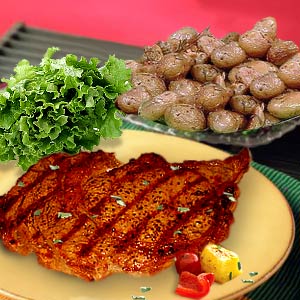
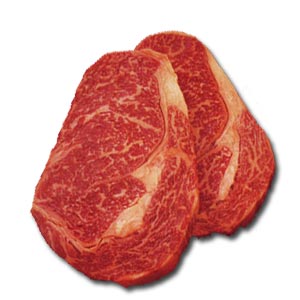
What goes into cooking a perfect steak? Is it the ingredients or the method of cooking like grilling, pan frying, roasting, marinating or simply the cook's expertise that make steakhouses steak simply delicious? No, the answer lies in steak itself - the perfect steak.
So, how do you select the perfect steak? Read further. Find answers to many aspects related to cooking delicious steak recipes at home. Learn how to pick best steak and how to store beefsteak. Different steak cuts require different cooking methods. Explore many wonderful easy ways to cook steak. Try delicious steak recipes. Homemade delicious steak recipes will leave your taste buds wanting more and more of beefsteak.
All about steak
Americans are very fond of red meat. Annually, on an average, Americans consume around 67 pounds of beef. Typically steak is a slice of meat cut from the fleshy part of beef. It is rich in zinc, selenium, phosphorous, iron and B vitamins. Beef is the richest source of Carnitine - the nutrient involved in the transport of long chain fatty acids into the power house of cells - mitochondria.
Translated into plain English, what that means is Carnitine - the substance found in beef - about 95 mg of Carnitine for every 3.5 Oz of beef, will help to improve your exercise performance, may help to reduce the total cholesterol and triglycerides levels and may help you to combat chronic fatigue syndrome. Some cuts of Beef may even contain less fat than a skinless chicken thigh. Steak is high in calories too due to high level of fat and protein content. But when excess fat is removed, steak can be a healthy diet. Calorie conscious steak lovers can go for the leanest pieces of steak with low calories.
Grass fed Beef offers more beta carotene, Vitamin E and Omega 3 Fatty acids than conventional grain fed beef according one study by the University of California Cooperative Extension and California State University. In the long past, cattle grazed on grass and hay while in the recent times cattle are fed with grains. The grass fed cattle fattened fast and produce fat marbled meat.
'Marbling' is a term associated with determining the quality of steak. Marbling is a special kind of fat that keeps the meat fibers from tightening during cooking. It helps beef remain juicy and brings a special flavor. Shopping becomes easier if you learn to find if the fat is finely speckled throughout the meat. When the steak is cooked, marbling melts, makes the beef juicy and lends beef a unique flavor. More marbling ensures better quality of steak. Marbling is also referred to as the taste fat.
Types of steak
There are many different types of steak. The differentiation is based on where the cut was made and how tender the meat is and how thick the slice is.
Rib eye steak: If you are looking for one of juiciest, tender steak with lot of fat content, rib eye steak is the most appropriate choice. Rib eye steak is from the rib section of the beef. Rib roast, rib eye roast, back ribs are also from the rib section. Rib eye boneless or bone-in taste equally good especially when dry heat-cooking methods such as roasting, baking, pan-frying, broiling and grilling are adopted.
Club steak: Triangular in shape, club steak is cut from the short loin, located just behind the ribs. Top loin, T-bone steak, porterhouse steak is also from the short loin. Take a look at the small 'eye' section. It should be fine in texture with delicate marbling. Dry cooking method is best suited for cooking cuts from the short loin.
Tenderloin steak: Most preferred for its outstanding taste, the tenderloin is the most tender and juicy steak. The king of steaks is found in the middle of the back between the sirloin and the rib. Though lightly marbled, it tastes great, as it is extremely tender. Tenderloin steak tastes best when a dry cooking method is adopted.
Mignon steaks: Fillet mignon steaks are cuts from the small end of tenderloin steaks. Boneless mignon steaks are most tender and boneless.
Tournedo steak: Tournedo steaks are cuts from the larger end of tenderloin steaks. Low in fat, high in protein and iron, choose tournedo steak to reduce consumption of fat.
Flank steak: Best suited for grilling, flank steaks are cuts of meat taken from the belly muscles of the cow. The meat is lean, muscular and flavorful. As flank steak is boneless and tougher compared to the loin and rib steaks, it tastes best when roasted after marinating or braising.
Skirt steak: Real fajitas are made using skirt steaks. Most preferred for its good flavor, a skirt steak is a cut from the diaphragm and is long, fatty cut of meat. The fat in skirt steak is evenly scattered. Marinate and grill skirt steaks for the best taste.
Sirloin steak: Steak eaters simply crave for the sirloin steak, a cut from the center of the sirloin. Top sirloin cap steak, sirloin tri tip, ball tip steak and flap steak are all part of the same cut. Sautéing, pan-frying, broiling, pan-broiling or grilling, sirloin steaks not only taste great but also have ample health benefits mainly because it is leanest of all cuts and comes without the extra fat.
Other cuts: Two cuts that do not produce steaks are shank and brisket cuts. These cuts are from the lower half of the cow. The fore shank section is the front leg of the cow and the brisket is in the back of the fore shank. Shank and brisket are tough meat and are preferred for stews and soups.
Steak buying guide
There are many advantages to learning about different streak cuts and its characteristics. Streak buying can be more productive than before. Be aware of which area the streak belongs to, the level of fat content, which steak is flavorful, which is boneless and bone-in, which steak is tougher and the steak that is healthier of the lot. Depending on the characteristics select the method of cooking recommended and experience best tastes.
Check freshness: Find the meat cut day and the sell-by date. Fresher the steak better would be the flavor. Select steak that looks bright and cherry-red in color. But, vacuum-packaged beef appears dark, purplish-color as the air inside has been removed from the package. Also, packaged steak must not have excessive moisture. Feel the beef texture. It should be firm but not soft. Steaks with brown splotches suggest age and have actually crossed the shelf period.
Know the grades: Grades signify the age and marbling of beef. Prime, choice and select are three grades of beef sold at retail outlets. Prime grade is best, expensive but highly tender with more marble. Prime grade is usually sold at specialty meat markets. Choice has less marbling than prime but more than select grade. Select grade is cheap, less flavorful and less tender. In a grocery store, choice grade is usually kept in the service meat case and the select is kept in the self-service meat area. Compared to 'choice' or 'select', 'prime' grade has more fat.
Appropriate cuts and cooking: Determining the meal is an important step before buying beef. In order to relish best steak taste and to cook beef properly, co-ordinate right beef cuts with suitable cooking method. There isn't a single ideal cooking method for steaks. Depending on the where the meat was located and its tenderness, cooking methods differ.
Ideal steak size: 1½ inch is the ideal steak size and it can go up to 2 inches. Because thinner the steak easier the cooking. In case you can't find the ideal steak size, try and get the meat cut.
No to flavored steak: Some shops sell steak injected with flavors or dipped in a water solution. You will pay extra as the weight of the steak increases. The steak may turn mushy as dipping in water solution can make the steak break down.
Easy online buying: Online steak buying indeed saves commuting time and also helps save gas. Determine method of cooking and the preferred quantity before placing an online order. Always select destinations that are widely acknowledged for selling quality steak. Read reviews to gather information on quality as well as delivery commitments. Check if a particular site is best rated for a select streak cut. In the United States, Texas, Montana, Nebraska, Wyoming are places well known for best beef. Buy only from reputed online steak selling sites.
How to cook steak
Given the nature of steak, there is no single ideal cooking method. A lot depends on the tenderness. As such, cooking methods are classified as either dry heat methods or moist heat methods. Take a look at best cooking method with respect to specific beef cuts.
Steaks dry heat-cooking method: Mostly the tender portions of beef are well suited for dry heat cooking method. Grilling, broiling, roasting and sautéing are the various dry heat cooking options. The cooking is usually done in an open pan with no liquids or oils. In fact, the steaks are allowed to cook in own fat. Beef cuts from the loin and rib are appropriate for dry heat cooking method.
Steaks moist heat-cooking method: The tougher cuts of beef taste best when moist heat cooking method is adopted. Braising, pot-roasting and stewing are some moist heat cooking methods. Herein, a little amount of liquid is added and the steak is cooked slowly or in medium flame duly covered with a lid. This method makes the tough steak tenderize. Beef cuts from the round, brisket, flank, plate, shank and chuck are most appropriate for moist cooking method. These lesser tender cuts can also be broiled if marinated earlier.
Safe steak cooking: To ensure safety, the USDA has laid out safe steak cooking temperature. A cut of meat should be cooked to a minimum of 145 degrees Fahrenheit (medium rare), 160 degree Fahrenheit (medium) and 170 degree Fahrenheit (well done). Use a food instant-read thermometer to check temperature. Ensure that the thermometer is inserted horizontally from the side so that it penetrates the thickest part of the steak.
Beefsteak recipe
Here are easy to prepare beefsteak recipes for parties or for lunch or dinner. Always use beef within three to five days time of purchase.
Marinated Sirloin steak recipe
Honey ¼ cup
Soy Sauce 3 tablespoons
Olive oil 2 tablespoons
Balsamic vinegar 1 tablespoon
Garlic cloves 2
Black pepper ¼ tsp
Beef sirloin steaks 2
Green onions 3
Peel the garlic cloves and keep aside. Ground the black pepper coarsely. Slice the green onions. Blend honey, soy sauce, oil, vinegar, garlic and pepper. Take a plastic bag. Pour 1/3-cup marinade into it. Take the steaks and sliced onions and put them into the plastic bag. Seal the bag. Keep it in the refrigerator for a minimum of 1-2 hours.
The remaining marinade is for basting. Store it in the refrigerator. Ready the grill. Drain the marinade and keep ready for basting. Grill the steaks duly covered. Medium-hot heat is favorable. Grill for 4-5 minutes. Turn occasionally and baste once or twice. Marinated Sirloin steak is ready. Serve hot.
Fillet mignon recipe
Cornstarch 2 teaspoons
Button mushrooms sliced 1 cup
Worcestershire sauce 2 tablespoons
Soy sauce 2 tablespoons
Unsalted butter 4 tablespoons
Cooking sherry ¼ cup
Black pepper to taste
Salt
4 Beef tenderloins cut 2 inches thick (trimmed)
Sauce preparation: Take a small saucepan and heat over low to medium heat. Add butter. Let it melt. Add 1-tablespoon wine. Add the mushrooms. Heat for a minute. Add cornstarch. Stir frequently. Let it dissolve. Check if sauce has thickened.
Rub the steaks with salt and black pepper. Keep in a plastic bag. Transfer Worcestershire sauce, soy sauce. Marinate for at least 3 hours. Grill the stakes for 7 minutes. Add mushroom sauce over the stakes. Serve immediately.
Tenderloin steak recipe
Tenderloin steak 2 pounds
Onions 4 (peeled and cut in halves)
Plain butter 4 tablespoons
Take a roasting pan. Transfer all ingredients. Add 1/3 cup of water. Bake for 40 minutes in the oven (moderate) Add desired seasonings and serve.
Top of the Page: Cooking Steak
Tags:#cooking steak #cooking sirloin steak #how to cook steak #grilling steak #steak recipe #beefsteak recipe #recipes for steak
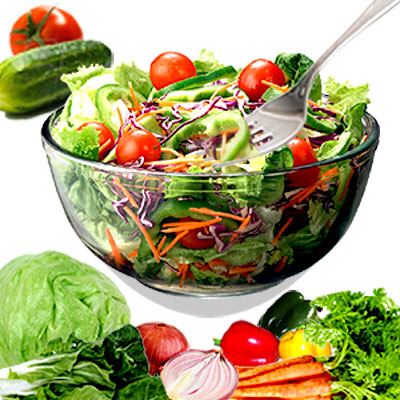 Food and Nutrition Facts
Food and Nutrition Facts Chamomile
Parsnip Soup
Dim Sum
Gazpacho Soup
Whole Grain Cereal
Jicama Nutrition
Bok Choy Stir Fry
Chia Seeds Benefits
Teff Nutrition
Kaniwa
Flax Seed
Wheatgrass Benefits
Kelp Benefits
Types of Chili Peppers
Medicinal Benefits of Pomegranate
Arugula Leaves
Maca Root
Pitaya Fruit
Benefits of Celery
Leek
Asparagus Benefits
Oyster Stew
Oyster Mushroom
Lupin Beans
Quinoa
Freekeh
Extra Virgin Olive Oil
Dill Pickle
Sauerkraut
Fat Burning Foods
Nutrition Chart
Food Combining
Calorie Counter
calories ...
Non Alcoholic Beverage
Punch Recipes
Food Label Nutrition
Homemade Sausages
Cooking Steak
Eating on a Budget
Budget Friendly Recipes
Quick Recipes
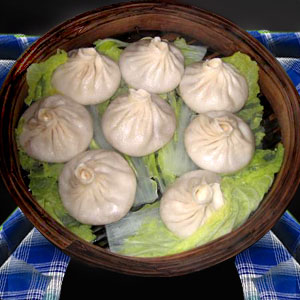 Healthy Packed Lunch
Healthy Packed Lunch Overnight Oats Recipes
Eggplant Casserole
Brunch Recipes
Burrito Recipes
Muffin Recipes
Cupcake Frosting
Apple Crisp
Stir Fry Cooking
Seafood Salad Recipe
Cooking Corn on the Cob
Finger Food Recipe
Sandwich Recipe
Bread Stuffing Recipes
Easy Chili Recipes
Picnic Recipes
Edible Mushroom Recipes
Mushroom Soup Recipes
Dip Recipe
Tapas Recipe
Corned Beef Recipe
Canned Salmon Recipe
Tilapia Recipes
Crumb Cake
Flourless Chocolate Cake
Regional Food
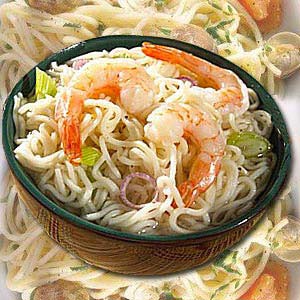 Lasagna Recipe
Lasagna Recipe Peruvian Ceviche
Chinese Food Recipe
Vietnamese Food Recipe
Malaysian Food
Korean Food Recipe
Indian Curry Recipe
Edible Rice Paper
Mexican Food Recipe
Quesadilla
Guacamole Dip
Italian Food Recipe
Spanish Food Recipe
Kosher Food
Falafel Recipe
Tandoori Chicken
Noodles
Canape
Couscous
Meatloaf
Chowder
Gumbo Recipe
Crockpot Recipes
Moroccan Food
Healthy Food
Pre Workout Snack
Matcha Tea
Simple food Swaps to Lose Weight
Foods to Beat Stress
Foods to beat Insomnia
Bone Density Foods
Prebiotic Foods
Kefir Grains
Agave Nectar
Spicy Trail Mix
Pesto Sauce
Homemade Hummus
Crab Cake Sauce
Bamboo Shoots Nutrition
Lemon Grass Plant
Butter Beans Recipes
Loose Green Tea
Seaweed Nutrition
Healthy Food
Low Fat Granola Bar
Steel Cut Oatmeal
Fruit Pizza
Pizza Toppings
Green Smoothie
Healthy Meal Planning
Delicious Mealtime Recipes
Heart Healthy Fats
Healthy Heart Recipe
Healthy Dinner Recipe
Healthy Dessert Recipe
Healthy Fast Food
Healthy Kid Recipe
Probiotic Food
Diabetic Friendly Foods
Fruit Salad Recipe
Bread Pudding
Tofu Recipe
Oat Bran
Broccoli Salad
Avocado Recipe
Iron Rich Food
Brain Foods
Antioxidant Food
Natural Diuretic
Low Fat Cooking Tips
Rice Pilaf Recipe
Low fat Chicken Recipe
Food Tips
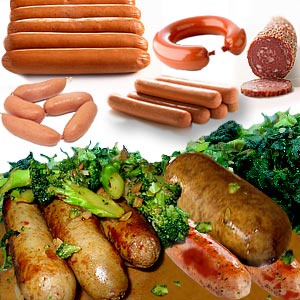
Sous Vide Cooking Technique
Natural Sugar Substitute
Stevia Sugar Substitute
Sunflower Seeds Nutrition
Bouquet Garni
Cake Decorating Tips
High Satiety Foods
Thanksgiving Dinner
Safe Food Storage
Frozen Food Storage Tips
Cold Storage Food Tips
Leftover Recipe
Food Pyramid
Dairy Free Food
Microwave Cooking
Food Intolerance
Homemade Ice Cream
Apple Cider Vinegar
Benefits of Honey
Beverage Cooler
Food Poisoning Symptom
Food Allergy Symptom
Food Addiction
Top of the Page: Cooking Steak
Popularity Index: 103,104

